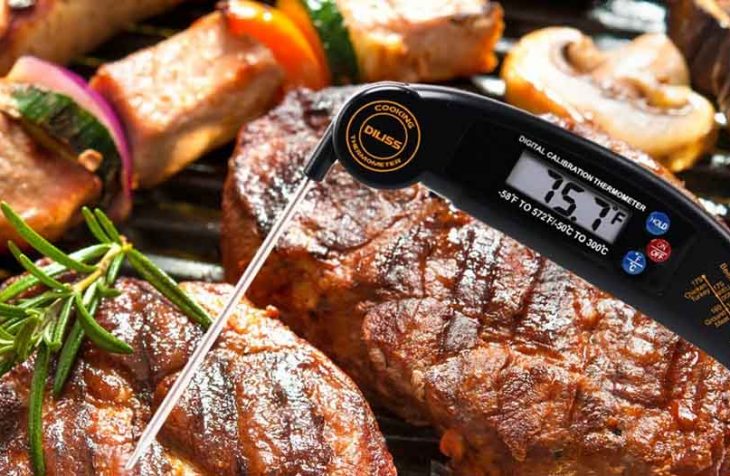How to calibrate a digital food thermometer
Food thermometers are essential in any serious cook’s kitchen. They offer an accurate picture of the food’s temperature. This is particularly important not only in maintaining the quality of food in terms of taste but also prevent food poisoning attributed to undercooked food or the presence of harmful disease-causing bacteria especially in birds like chicken and turkey. To this end, it is important to ensure your digital food thermometer is correctly reading. Calibration plays an important role in giving a true picture of how your food or brewing thermometer is working.
Before you calibrate your thermometer ensure you have a supply of ice, hot water, and a glass.
Calibrating using cold water
- Place the ice at the bottom of the glass.
- Add cold water on top of the ice.
- Place your thermometer inside the glass ensuring it doesn’t touch the bottom or sides of the glass.
- Wait for three minutes.
- Take your readings
- Ensure you take your readings before the ice starts melting.
- A digital thermometer in working order should give a reading of 32 degrees Farenheight
- A faulty one will give conflicting readings.
- It is advisable to repeat the process and take a mean of the readings to have a clearer picture.
Calibrating using Boiling water
- Bring your water to boil.
- Add the boiling water to a glass
- Insert the thermometer ensuring it doesn’t touch the sides of the glass
- Wait for three minutes
- Remove the thermometer and take the readings. A good thermometer should read 212°F (100°C). However, this is only true at zero altitudes. Depending on your elevation, the figure varies. Calculate the expected readings of your current altitude.
- Repeat the process several times to have a mean reading before concluding.
Check this too: Best Bluetooth meat thermometer
Analog thermometers can be manually calibrated; however, their digital counterparts pose a problem if they start giving false readings. In case your readings aren’t accurate you may need to invest in a new thermometer. It is often advisable to frequently calibrate your thermometer for consistency of food readings.
